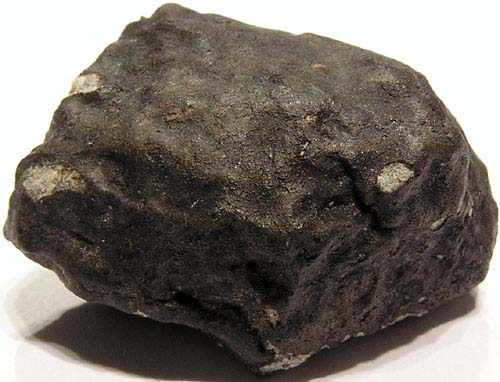


- Meteorites For Sale - Found A Meteorite? - Monthly Favourite - Meteorite Information - Classification List - Meteorite Collection - Media Centre - Home - Search - Site Map - Contact |
|
Kilabo The Kilabo meteorite fell at 19:30 local time on July 21st, 2002 in Nigeria, Africa. Incredibly, this was just several hours after the Thuathe meteorite fell some 5000kms away on the other side of the African continent in Lesotho. The Kilabo fireball was reportedly observed moving from South to North during which two detonations were heard. Mr. Mallam Audu and several neighbours in Kilabo heard the stone fall and later recovered it. The meteorite was found in a small crater/depression measuring 35cm wide by 20cm deep in sandy soil. It had fragmented on impact into many pieces, the largest of which was 2.2kg. Stones were recovered in five villages in the region, with the largest piece found in Kilabo. A Total Known Weight of approximately 19 kg was recovered. Kilabo has been classified as an Ordinary Chondrite LL6, with a Shock Rating of S3 and a Weathering Level of W0 (Unweathered). It is a Brecciated Chondrite with thin black shock veins and coarse-grained diopside. Troilite (FeS) is also abundant. Kilabo is characterised by its beautiful pale ash-grey interior, richly contrasted by the unusually thin, striking black fusion crust. There is a particular crisp delicateness to Kilabo which generally isn't seen in other recent falls such as Bensour, Thuathe and Oum Dreyga. Many individuals from the Kilabo fall have a knobbly or almost gentle wavy appearance. This may be from mid-stage detonations during the fall which allowed sufficient time to redevelop the rich black fusion crust but not enough to ablate a smooth surface again. The specimens below are part of the Meteorites Australia Collection.
Click here to view the archive of the Monthly Favourites
|
.jpg)
.jpg)
.jpg)
